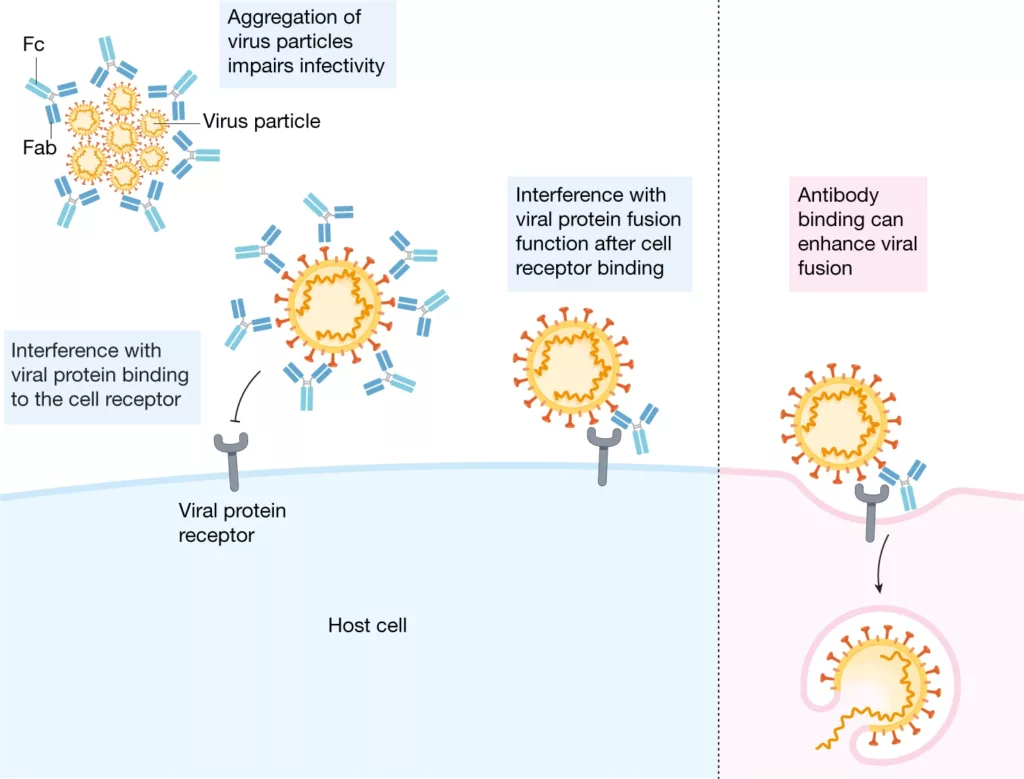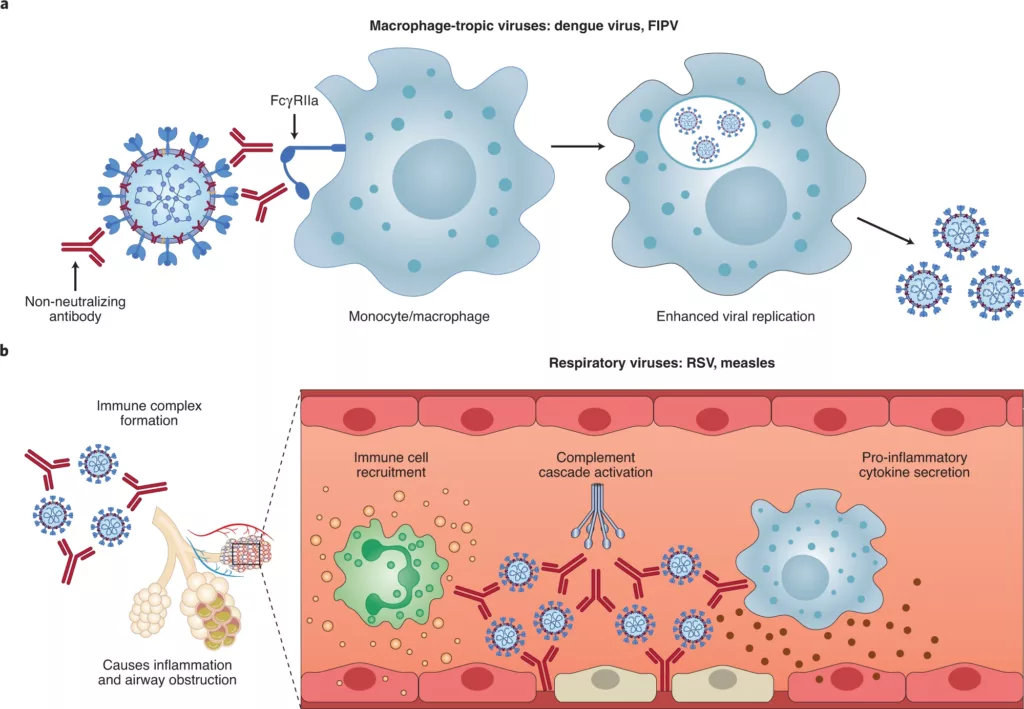ADE effect is believed to be related to the Fc receptor, a protein found on the surface of quite a few types of cells in the human body. Normally, the function of the Fc receptor is to destroy pathogens or infected cells. However, studies have shown that some viruses, such as SARS and SARS-CoV-2 can use the Fc receptor to infect human cells.

Nature | July 13 2020

Fig. Neutralization of viruses by functions of the IgG Fab fragment.
Mechanisms of antibody-mediated neutralization of viruses by functions of the IgG Fab fragment that block binding to cell surface receptors and inhibit infectivity by aggregating viral particles and inhibiting steps in the viral life cycle, such as fusion. Binding of antibodies with certain properties may enable changes in the viral entry protein that accelerate fusion.
Nature Microbiology | September 9 2020

Fig. Two main ADE mechanisms in viral disease.
a, For macrophage-tropic viruses such as dengue virus and FIPV, non-neutralizing or sub-neutralizing antibodies cause increased viral infection of monocytes or macrophages via FcγRIIa-mediated endocytosis, resulting in more severe disease. b, For non-macrophage-tropic respiratory viruses such as RSV and measles, non-neutralizing antibodies can form immune complexes with viral antigens inside airway tissues, resulting in the secretion of pro-inflammatory cytokines, immune cell recruitment and activation of the complement cascade within lung tissue. The ensuing inflammation can lead to airway obstruction and can cause acute respiratory distress syndrome in severe cases. COVID-19 immunopathology studies are still ongoing and the latest available data suggest that human macrophage infection by SARS-CoV-2 is unproductive. Existing evidence suggests that immune complex formation, complement deposition and local immune activation present the most likely ADE mechanisms in COVID-19 immunopathology.

The COVID-19 pandemic caused by the novel coronavirus SARS-CoV-2 has led to over 1,700,000 deaths worldwide and unprecedented decimation of the global economy. Despite its tremendous impact, the origin of SARS-CoV-2 has remained mysterious and controversial.
Many Scientific research used biological evidence and in-depth analyses to show that SARS-CoV-2 must be a laboratory product, which was created by using a template virus (ZC45/ZXC21) owned by military research laboratories under the control of the Chinese Communist Party (CCP) government. In addition, resources and expertise are all in place in the Wuhan Institute of Virology (WIV) and related, other CCP-controlled institutions allowing the creation of SARS-CoV-2 in approximately six months.
More and more evidence show that SARS-CoV-2 may be an Unrestricted Bioweapon and the current pandemic a result of Unrestricted Biowarfare.Not only because of that , SARS-CoV-2 meets the criteria of a bioweapon specified by the PLA, but also because its impact is well beyond what is conceived for a typical bioweapon.In addition, records indicate that the unleashing of this weaponized pathogen should have been intentional rather than accidental.
So far, there is no panacea for COVID-19. Even though clinical data show the safety and efficacy of hydroxychloroquine for both early treatment and prophylaxis, big pharmaceutical companies have been actively touting vaccines for COVID treatment, likely driven by the high profit.


